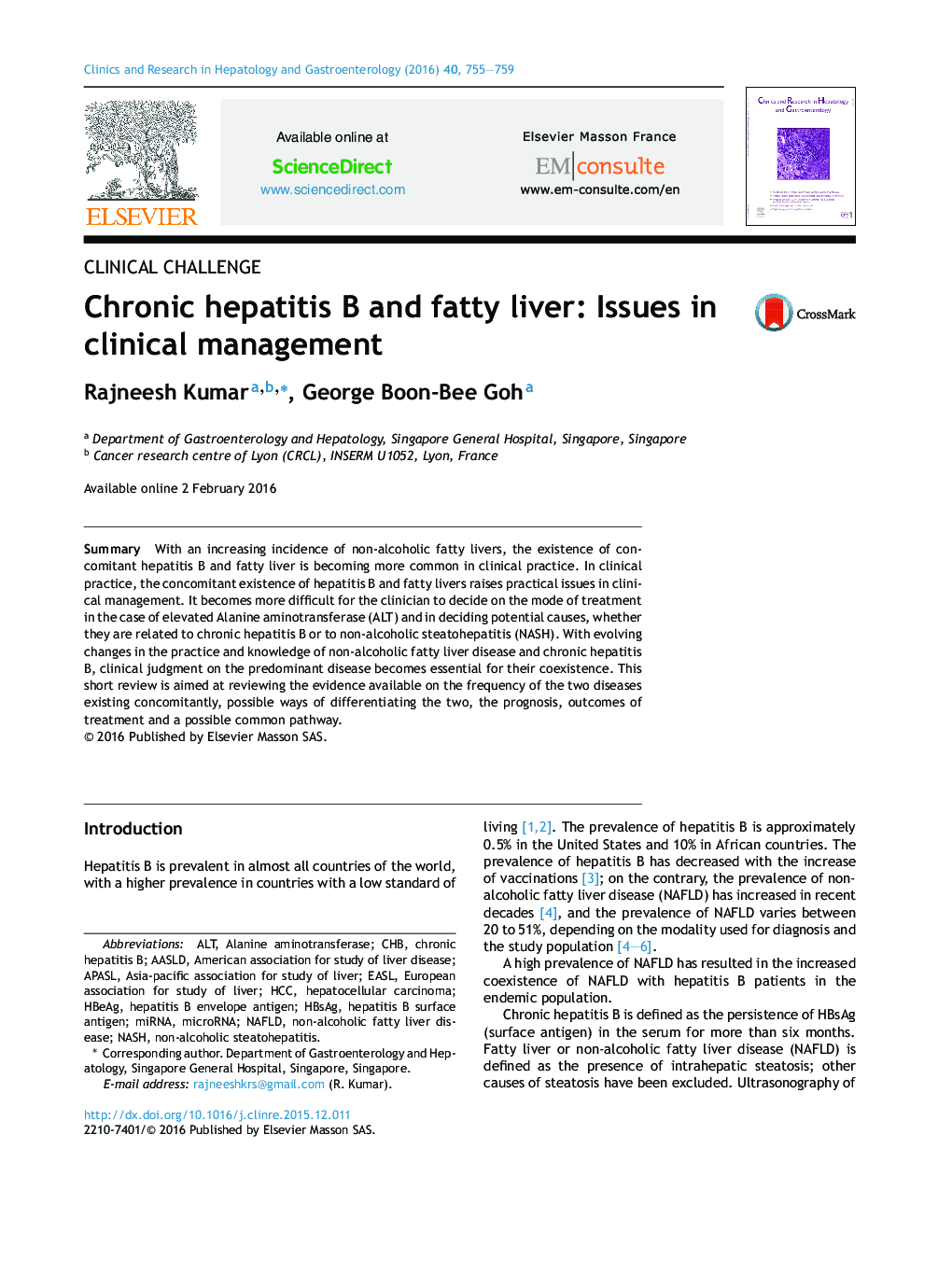| Article ID | Journal | Published Year | Pages | File Type |
|---|---|---|---|---|
| 6091714 | Clinics and Research in Hepatology and Gastroenterology | 2016 | 5 Pages |
SummaryWith an increasing incidence of non-alcoholic fatty livers, the existence of concomitant hepatitis B and fatty liver is becoming more common in clinical practice. In clinical practice, the concomitant existence of hepatitis B and fatty livers raises practical issues in clinical management. It becomes more difficult for the clinician to decide on the mode of treatment in the case of elevated Alanine aminotransferase (ALT) and in deciding potential causes, whether they are related to chronic hepatitis B or to non-alcoholic steatohepatitis (NASH). With evolving changes in the practice and knowledge of non-alcoholic fatty liver disease and chronic hepatitis B, clinical judgment on the predominant disease becomes essential for their coexistence. This short review is aimed at reviewing the evidence available on the frequency of the two diseases existing concomitantly, possible ways of differentiating the two, the prognosis, outcomes of treatment and a possible common pathway.
